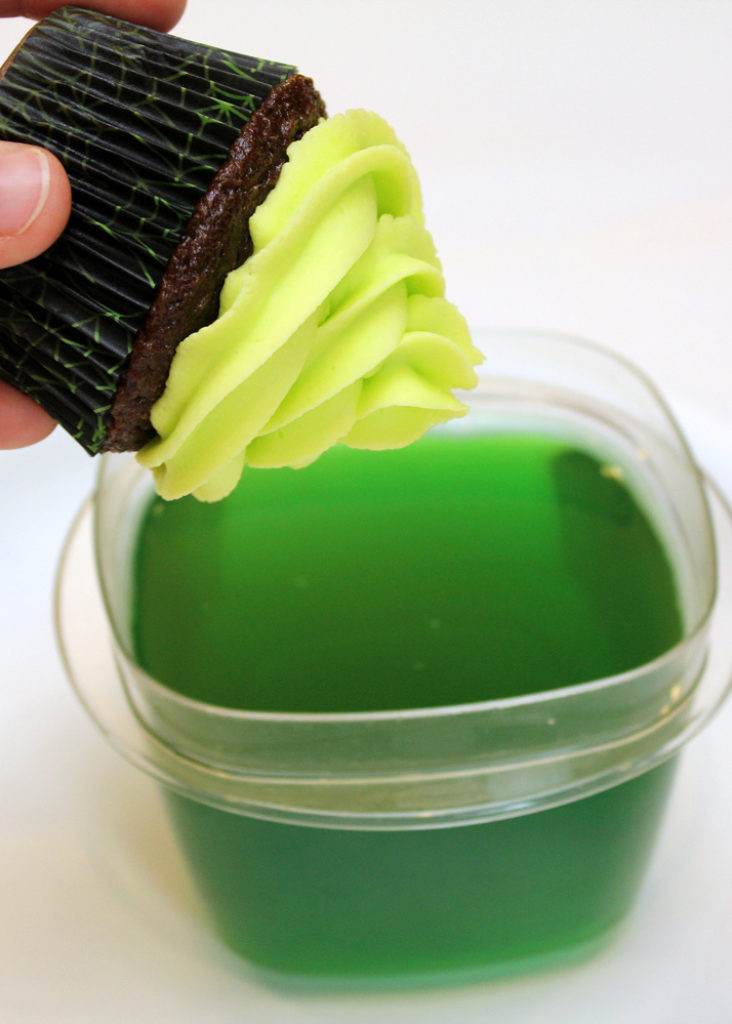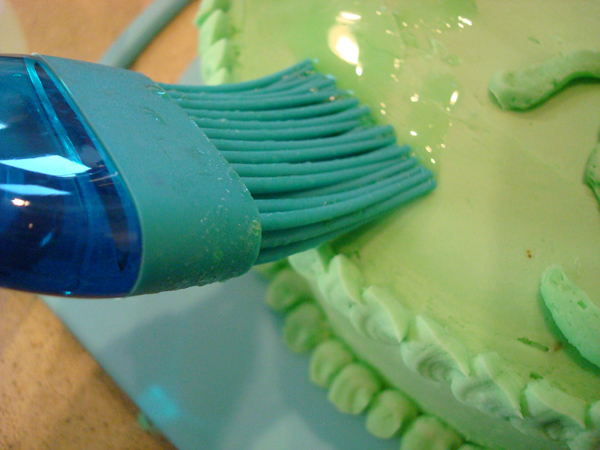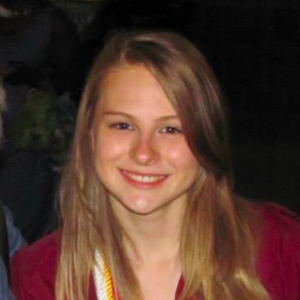We all learned to make ice cream in a bag in chemistry class (if you didn’t, then you should definitely try it at home). But it seems like we missed out on a way more fun food experiment: making glow-in-the-dark frosting.

Photo courtesy of recipesnobs.com
Tonic water acts as the secret ingredient to this ghoulish frosting. Tonic water contains a chemical called quinine, which becomes florescent when placed under backlight (read up on the science of how it works).
To achieve the glow-in-the-dark effect, make a classic American buttercream (which is basically just butter and powdered sugar) with several tablespoons of tonic water and green food coloring if desired. Decorate your cake or cupcakes however you like and then freeze it until the frosting hardens.

Photo courtesy of Jessie Moore
Once the frosting is hard, prepare your Jell-O glaze. Prepare the Jell-O according to the package instructions, but replace the cup of cold water with a cup of chilled tonic water. Allow the Jell-O mixture to cool, but do not let it set.
Pull your frosted treats out of the freezer, and coat the frosting with the glaze. Put it back in the freezer until the glaze sets, and repeat five more times for best results. One complete, store the cupcakes in the fridge. When you’re ready to serve, plop them in front of a backlight. Not only will the cupcakes glow, but your friends’ faces will light up in amazement.

Photo courtesy of Recipesnobs.com
Unfortunately, there is a reason glowing objects tend not to stimulate our appetites. Even though the tonic water is completely edible, the quinine in it gives it a bitter taste. So if you put tonic water in your frosting, don’t expect it to taste very good (Nutella is a much more enjoyable buttercream addition).
On top of that, freezing the cake and storing it in the fridge can dry it out and alter the texture of the frosting. And the glaze creates a hard, gelatin exterior that has no place with soft, creamy frosting.
Sure, this glow-in-the-dark frosting is edible, but so are stinky sock-flavored jelly beans. Remember, just because you CAN eat something, doesn’t mean you should.


